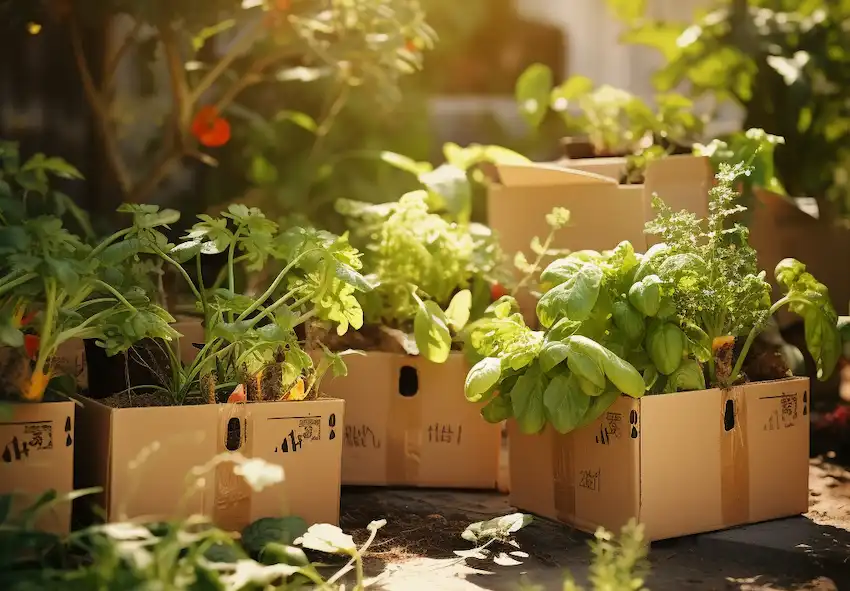Planting in cardboard boxes represents a simple, innovative approach to gardening that is gaining popularity among gardeners of all levels. This method, often heralded as an effective no-dig solution, offers numerous benefits, especially for those dealing with poor soil quality or limited physical ability to cultivate the land traditionally. Here’s a detailed exploration of why using cardboard boxes for planting could be a game-changer for your gardening practice, complete with a step-by-step guide on how to set it up.
Why Plant in Cardboard Boxes?
- No-Dig Convenience:
Cardboard box gardening eliminates the need for digging. This is particularly beneficial for those who either physically cannot dig or prefer not to disturb the soil’s natural structure and inhabitants. - Soil Quality Improvement:
For areas plagued by poor soil, cardboard boxes provide an immediate solution. You can fill these boxes with high-quality, nutrient-rich soil, ensuring your plants have the best start without the need to amend the existing ground. - Natural Composting:
Cardboard decomposes over time, enriching the soil beneath with organic matter. By layering new boxes over old ones annually, you’re effectively building a composting system that continuously revitalizes the soil. -
Weed Suppression:
The cardboard acts as a barrier to weeds, significantly reducing the need for manual weeding and the use of chemical herbicides. -
Pest Management:
Elevating plants in cardboard boxes can help deter certain pests, offering an added layer of protection to vulnerable seedlings.
Step-by-Step Guide to Planting in Cardboard Boxes
1. Gather Materials:
– Cardboard boxes (without plastic or glossy coatings)
– Scissors or a box cutter
– Compost or high-quality soil
– Plants or seeds
– Mulch (optional)
2. Prepare the Cardboard Boxes:
– Remove any tape or labels from the boxes.
– Cut the boxes to fit your garden space or desired planting area. Ensure they have a flat base and are of manageable size for ease of handling.
3. Set Up the Planting Area:
– Place the cardboard boxes in your desired location. If you’re placing them directly on grass or weeds, you might want to moisten the area first to help suppress them further.
4. Fill with Soil:
– Add a layer of compost or high-quality soil to each box. Fill the boxes to the top, leaving a little space for watering.
5. Plant:
– Plant your seeds or seedlings according to their spacing and depth requirements. Follow specific planting guidelines for each plant type to ensure optimal growth.
6. Water and Mulch:
– Water the newly planted boxes thoroughly. Add mulch on top if desired to help retain moisture and further suppress weeds.
7. Maintain:
– Monitor your plants regularly for water needs and growth. The cardboard will gradually decompose, so you may need to replenish the soil and compost as needed.
Benefits of Using Cardboard Boxes for Planting
- Accessibility: Makes gardening accessible to individuals with limited mobility or those who are new to gardening.
- Eco-Friendly: Utilizes recyclable materials and reduces the need for chemical herbicides and pesticides.
- Flexibility: Can be adapted for various gardening styles, including urban gardening and container gardening.
Cardboard box gardening offers a practical and eco-friendly solution for many gardening challenges. By leveraging this simple yet effective method, you can create a thriving garden that benefits both you and the environment.
